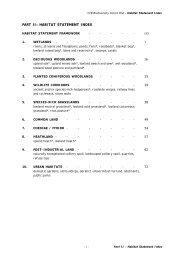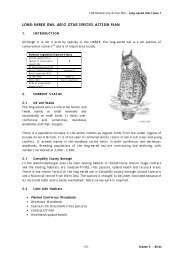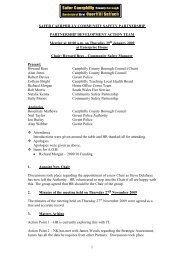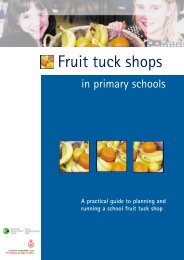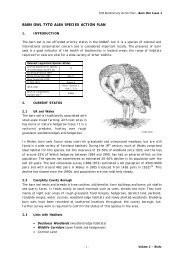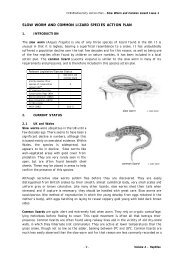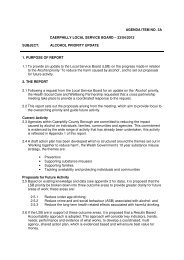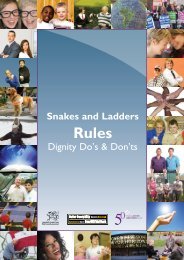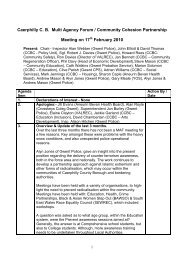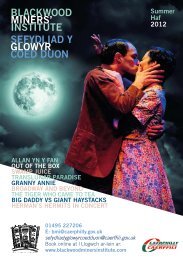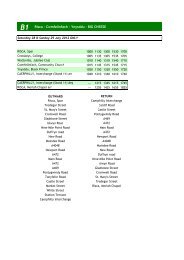Teachers' Notes Plague Bag Activity
Teachers' Notes Plague Bag Activity
Teachers' Notes Plague Bag Activity
Create successful ePaper yourself
Turn your PDF publications into a flip-book with our unique Google optimized e-Paper software.
Teachers’ <strong>Notes</strong><br />
<strong>Plague</strong> <strong>Bag</strong> <strong>Activity</strong><br />
This cross curricula activity is designed<br />
to introduce concepts of medicine and<br />
healthcare in the past and the selfsufficiency<br />
of an estate like Llancaiach<br />
Fawr, where the plants in the garden were<br />
grown for many different reasons.<br />
Gardens in the 16 th and 17 th centuries became more ornamental<br />
and elaborate as times became more peaceful and settled.<br />
Formal gardens, knot gardens and privy gardens (where rare or<br />
special plants were grown and where the family, especially the<br />
lady of the house, sat in quiet enjoyment) became a feature of<br />
many gentry houses.<br />
However, gardens in this period also served a more practical<br />
purpose, yielding plants and herbs not just for decoration but<br />
also for cooking and for the making of perfumes and “cures”.<br />
The Mistress of the house was expected to have some skill in<br />
creating ointments and salves as herbal remedies for her<br />
family and the wider household of servants. Frequently, it<br />
was only the very wealthy who could afford to pay doctors, who<br />
could often only be found in the larger towns and cities.<br />
The <strong>Plague</strong> struck regularly throughout the 16 th and 17 th<br />
centuries before the mass outbreak of the Great <strong>Plague</strong> in<br />
1665. In the 17 th century, it was widely believed that plague<br />
was generated by foul vapours from the earth which created a<br />
“miasma” of bad air. Scented herbs with refreshing smells were<br />
thought to be able to prevent infection from this miasma.<br />
“<strong>Plague</strong> <strong>Bag</strong>s” filled with herbs and nosegays of sweet scented<br />
plants became popular. They were carried around and pressed to<br />
the nose, in the belief that inhaling the goodness contained<br />
within the herbs would prevent infection from the foulness<br />
contained in any surrounding bad air. The herbs within the<br />
bags could also be<br />
used to treat a range of other ailments. It<br />
was not until the late 19 th century that it was<br />
discovered plague had been passed on by the<br />
fleas of the black rat.<br />
Nicholas Culpeper (1616-54) was an astrologer-physician whose<br />
publications of “The English Physician” and “Complete Herbal<br />
” in 1652 and 1653 respectively helped to widen knowledge of<br />
herbal remedies. In these works, he aimed to teach the common<br />
man and woman how to treat themselves. By cataloguing the uses<br />
and medical virtues of a range of herbs, Culpeper hoped to<br />
Llancaiach Fawr Manor - 30 - Teachers’ <strong>Notes</strong>
Teachers’ <strong>Notes</strong><br />
make such knowledge more widespread so that even the poor<br />
could have access to good, simple medicines.<br />
Listed below are examples of some of curative purposes<br />
attributed to various herbs by Culpeper and others.<br />
Curative properties of herbs,<br />
as used/ believed in the 17 th century<br />
Lavender<br />
• Thought to relieve pain from headaches.<br />
• Also used to calm the nerves and promote sleep.<br />
• Was also used to perfume a room and to scent clothing.<br />
Rose<br />
• Used to help cure colds and coughs.<br />
• A tincture of rose used to help strengthen the stomach<br />
and prevent vomiting.<br />
• Used also for perfumes.<br />
Cowslip<br />
• Thought to help to take away spots, wrinkles and<br />
freckles.<br />
• Also used to assist in the prevention of nightmares.<br />
• Thought to help cure trembling and convulsions.<br />
• Also thought to be good for calming the nerves and<br />
preventing insomnia.<br />
Rosemary<br />
• Thought to be especially useful to stave off pestilence<br />
and to help a poor memory.<br />
• Rosemary oil rubbed on the head believed to prevent hair<br />
loss.<br />
• Also used as a strewing herb – strewed on floors so that<br />
its scent was released when it was walked over.<br />
• Also used in cooking to disguise the taste of rotting<br />
meat.<br />
Sage<br />
• Used to help cure throat pain.<br />
• Used to help wounds heal, especially those in the mouth<br />
like ulcers.<br />
• Used to induce sweating in feverish colds.<br />
• Though to help cure boils and ulcers.<br />
• Also used in cooking to disguise the taste of rotting<br />
meat.<br />
Llancaiach Fawr Manor - 31 - Teachers’ <strong>Notes</strong>
Teachers’ <strong>Notes</strong><br />
Cloves<br />
• Thought to cure pain from stomach ache.<br />
• Used to relieve pain caused by toothache.<br />
• Also used to spice breads, puddings and meats.<br />
Camomile<br />
• Thought to calm the nerves.<br />
• When used in water was rubbed on a swollen or bruised<br />
limb to lessen the swelling and relieve the pain.<br />
• Also thought to relieve itching.<br />
Cornflower<br />
• Cornflower was used to help cure eye ailments.<br />
• According to Culpeper, cornflower was also useful for<br />
removing poison from scorpion stings.<br />
Llancaiach Fawr Manor - 32 - Teachers’ <strong>Notes</strong>



